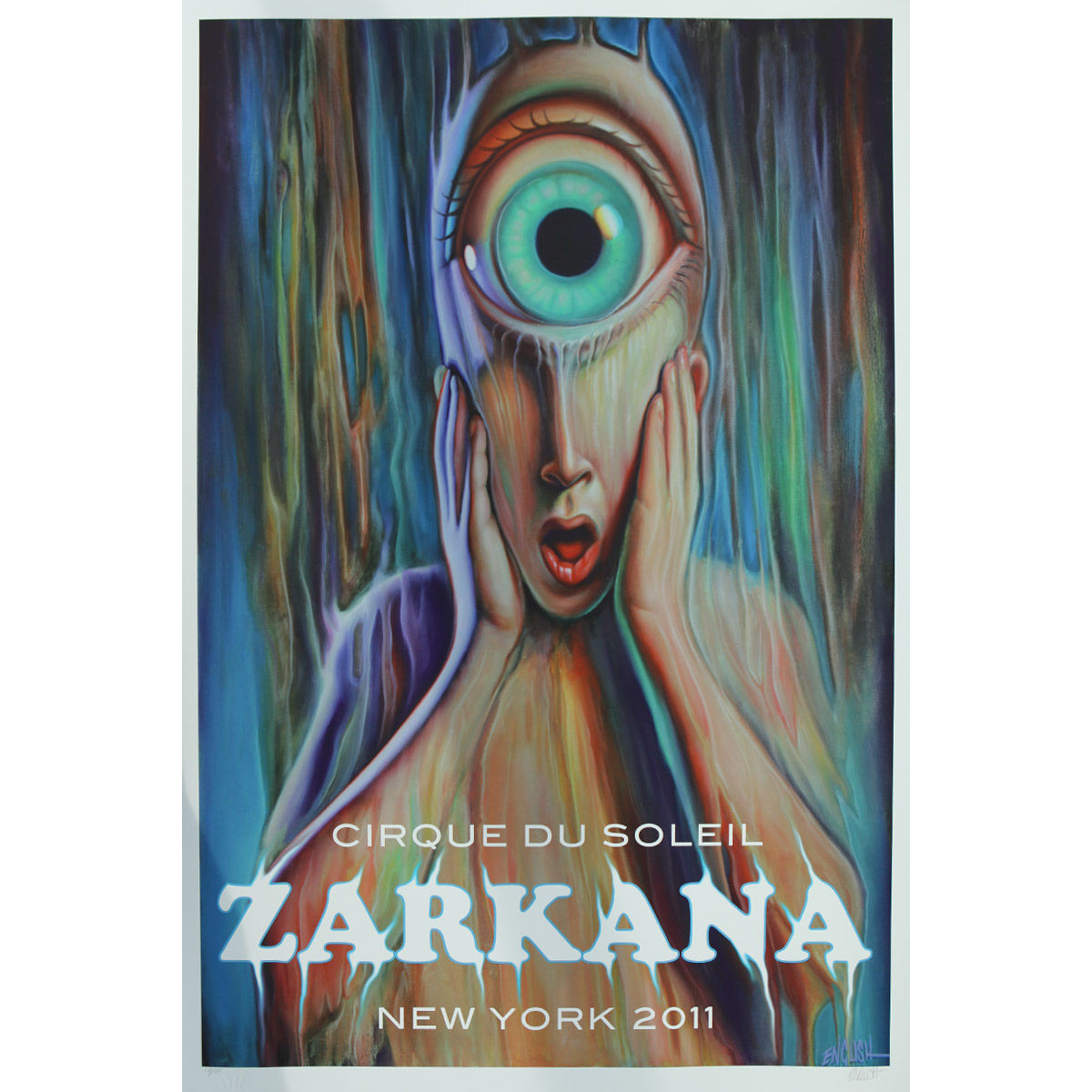ART PRINT
Zarkana - Ron English
Item Details
Artist
Series
Medium
Venue
About this Artist
One of the most prolific and recognizable artists alive today, Ron English has bombed the global landscape with unforgettable images, on the street, in museums, in movies, books and television. English coined the term POPaganda to describe his signature mash-up of high and low cultural touchstones, from superhero mythology to totems of art history, populated with his vast and constantly growing arsenal of original characters, including MC Supersized, the obese fast-food mascot featured in the hit movie “Supersize Me,” and Abraham Obama, the fusion of America’s 16th and 44th Presidents, an image widely discussed in the media as directly impacting the 2008 election. Other characters carousing through English’s art, in paintings, billboards, and sculpture include three-eyed rabbits, udderly delicious cowgirls and skull grinning popular cartoon characters, blending stunning visuals with the bitingly humorous undertones of America’s Premier Pop Iconoclast. Screen printing is a printing technique that uses a woven mesh to support an ink-blocking stencil. The attached stencil forms open areas of mesh that transfer ink or other printable materials which can be pressed through the mesh as a sharp-edged image onto a substrate. A roller or squeegee is moved across the screen stencil, forcing or pumping ink past the threads of the woven mesh in the open areas. Screen printing is also a stencil method of print making in which a design is imposed on a screen of silk or other fine mesh, with blank areas coated with an impermeable substance, and ink is forced through the mesh onto the printing surface. It is also known as silkscreen, seriography, and serigraph. Our Name The term “safe walls” refers to legal spots in the urban landscape for local graffiti artists to do their work without the fear of sanctions. The Poster As A Vital Art Form From the public notices of Antiquity and the first leaflets and placards handed out by traveling performers—which hark back to the end of the 15th century—to the advertisements of contemporary circuses, the poster has had a long and colorful history. With the advent of printing, circuses all over the world were able to produce posters in large quantities for display in public places to attract the attention of passers-by. Generally created by local artists, these visually striking works were the ambassadors of traveling big-top circuses and spread the word of their imminent passage in a city. Like the circus itself, the circus poster of lore exerts a fascination all its own; it strikes the spectator head-on. Poster artists and illustrators have had the uncanny ability to distill enormous amounts of information into iconographic images that penetrate and endure. Posters are designed to mystify, arouse curiosity and the urge to see, but more than mere advertising tools, they have long been recognized as a vital art form—one that shares common roots
Production Details
- Released date n/a
- Retail Price $350.00
- Height 36.00"
- Width 24.00"
- Edition 50
- Numbered No
